There are a number of tools that are essential to making Edomae sushi. The simple yet useful designs have been refined over the years since the inception of Nigiri sushi. They have also developed in forms that are easy to care for and maintain cleanliness, precisely because of the nature of serving customers Nigiri sushi, which contains raw ingredients. Here, we introduce the major tools of the trade.
Wooden bowl for sushi rice (Sushi oke)

This is a basic tool for making sushi rice. It is also called Handai or Hangiri. It feels really authentic when you pair it with a round fan for cooling the rice. The rice isn’t kept warm after the rice is made, but the excess moisture from the rice is absorbed so the rice won’t get sticky and instead gets a lustrous finish. The Sushi oke is also broad and flat, making it easy to mix and cool the rice. It should be wetted with water beforehand so the rice kernels don’t stick. Japanese cypress is considered to be the highest end in terms of materials. Each time it is used, it must be washed and dried thoroughly. The wood contracts when it is placed in sunlight, so it needs to be dried in a well-ventilated, shady place.
Rice scoop (Shamoji)
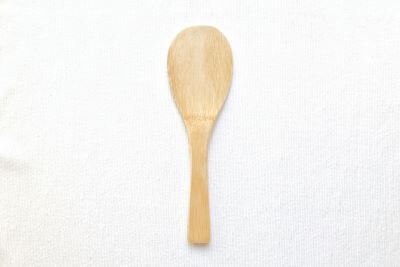
This utensil is used for mixing and scooping rice and is generally made of wood or bamboo. It is wetted with water before use so the rice kernels won’t stick to it easily. Lately, there are also plastic versions with embossing finishes. “Miyajima,” another name for the rice scoop comes from the 18th century when an ascetic monk residing at the temple on Miyajima in Hiroshima, made a rice scoop that resembled the Japanese lute held by Benzaiten (the goddess of music), and suggested selling the scoop as a local souvenir.
Rolling mat (Makisu)
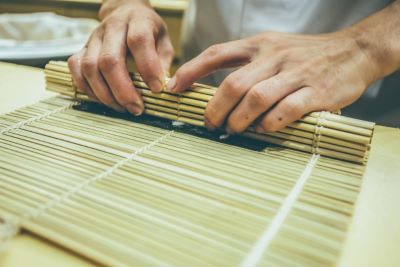
This tool is used for making sushi rolls. It is made by tying thin strips of bamboo together with cotton thread. The size is called “Zenkei,” which is 21 cm long and 19 cm wide, to match the size of a sheet of Nori. When making the rolls, the mat is laid out so the sheath side of the bamboo (some rolling mats don’t have sheaths) is facing down and the knots of the cotton thread are facing up. The chef will roll forward, away from himself. A piece of Nori is laid out on the sheet, rice is spread on it and then it is rolled. After use, the rolling sheet is cleaned and dried thoroughly. There are now plastic and silicon versions available as well. When rolling the rice on the outside, such as for California rolls, rice may get stuck between the pieces of bamboo, so plastic wrap is laid out before spreading the rice.
Round Japanese fan (Uchiwa)
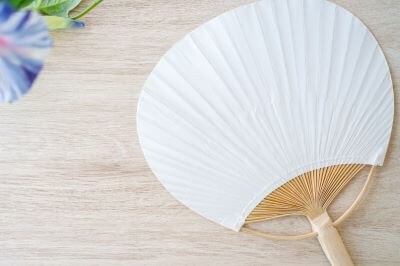
A round Japanese fan called an Uchiwa is essential for cooling sushi rice. Using an Uchiwa to fan and quickly cool sushi rice mixed with Awasezu gives it a glossy finish. Large, sturdy fans are easier to use for this purpose.
Cutting board(Manaita)
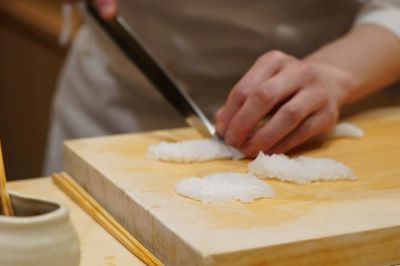
There are wooden and plastic cutting boards and chefs choose which to use according to personal preference. Wooden cutting boards are made from ginkgo, Japanese cypress, and rose-gold pussy willow. The elasticity of the wood means that the cutting board is less likely to damage the blade of the knife. The moderate amount of oil contained in the wood also means that it drains well and has antibacterial properties.
After use, the cutting board is washed clean and wooden boards are dried in the shade while plastic are wiped dry.
Grater (Oroshigane)

This tool is convenient for grating wasabi. The best graters are made of pure copper. The blades are sharp and make great, moist, grated daikon radish, etc. When grating Wasabi, sharkskin graters are used for the fine-grained surface and smooth finish.
Kitchen knives (Hocho)
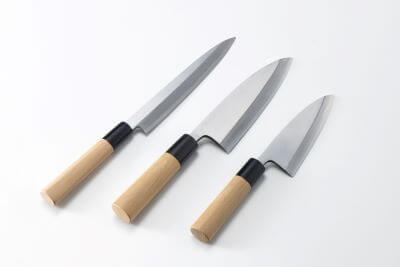
The cut of sushi and sashimi is important, so it’s also important to use a kitchen knife that can cut well. Knives with long and thin blades cut well. The knife should be wiped with a damp cloth each time it is used so that rice kernels won’t stick to it. After use, it is washed clean and all moisture is wiped off it. Yanagiba bocho is used for cutting sashimi and sushi toppings while Deba bocho is used for initially filleting the fish. Deba bocho is also sometimes used for cutting vegetables, but the smell of the fish will transfer to those vegetables so it’s better to use Usuba bocho.
Whetstone (Toishi)
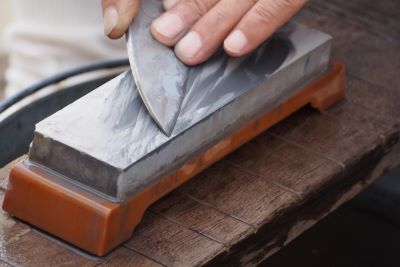
In order to maintain the cutting ability of the knives, the chef’s workday ends with sharpening them. A medium-grade whetstone and finishing (hard) whetstone are both used for daily sharpening. In case of a chip in the blade, a rough whetstone is used.
Egg omelet pan (Tamago-yakinabe)
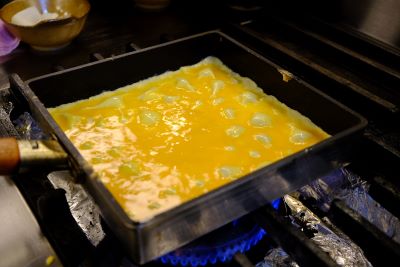
This is a cooking utensil made specially for making egg omelets and Japanese-style rolled omelets. It is also called “Gyokuban”. There are two types: the square Kanto-style pan and the rectangular Kansai-style pan (for home use). It is made of copper and perfect for quickly and evenly heating ingredients, especially for cooking eggs in a thin sheet so they can be rolled up neatly.
Sieve (Zaru)
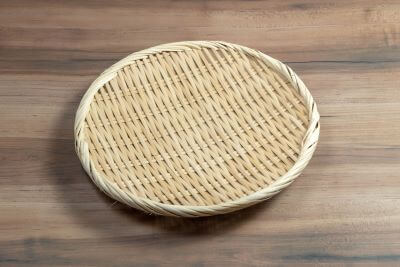
This is essential for preparations such as salting fish, draining vinegar and moisture from fish, and when taking ingredients out of broth. It is made from bamboo, which provides good ventilation.
Rice tub (Meshibitsu)
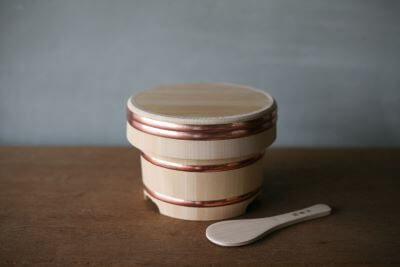
It is also called Komebitsu or Ohachi. Basically, it is a round, wooden container for cooked sushi rice. Those made from Japanese cypress are considered to be the highest end. It doesn’t retain heat well, but it absorbs excess moisture, so the sushi rice won’t get sticky.
Nori seaweed container (Nori can)
Nori doesn’t do well in humidity, so it is stored in a sealed container, such as an aluminum can.
Brush/Sauce container (Hake/Tareire)
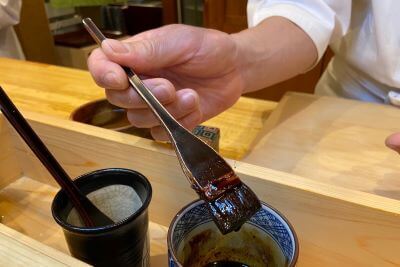
This is a container for holding Nikiri and Nitsume. Nikiri is applied to the freshly made sushi using a brush.
Cooking brushes are divided into three types according to the quality of the hair. The main types are natural hair, synthetic fiber, and silicone, and the characteristics and ease of use of each type vary according to the material. Natural hair is soft and has a good amount of resilience, so it is convenient because it can be used without being affected by the viscosity of liquids such as sauces. Another advantage is that the fine tips of the hairs can be used to apply the sauce without damaging the surface of the ingredients. It is also attractive that the hairs easily absorb moisture, so liquids can be applied easily. On the other hand, there is a possibility that the hairs will fall out while in use.
In sushi restaurants, brushes made from horsehair are commonly used, but weasel hair is particularly soft and does not damage ingredients, but it is very expensive. When using a new brush, soak the hairs in warm water before use.
Cooking chopsticks (Manabashi/Saibashi/Moribashi)
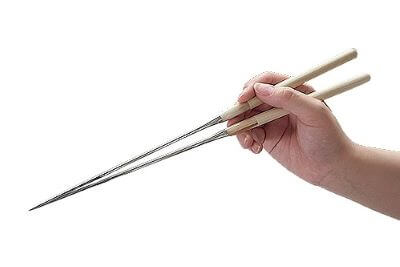
Manabashi (魚菜箸) are chopsticks used for garnishing fish and are essential for decorating sashimi. They are made of bamboo and taper to a point. Nowadays, metal Manabashi is more commonly used, but it is not a good idea to use metal ones for garnishing. This is because the fish easily slips off the metal chopsticks, making it difficult to garnish accurately. It seems that metal Manabashi became popular as a tool for sushi restaurants and other places where they are used to show customers.
On the other hand, Saibashi (菜箸) is used when boiling vegetables or cooking dishes such as simmered vegetables. They are often made of bamboo and have a tapered tip.
Sasara
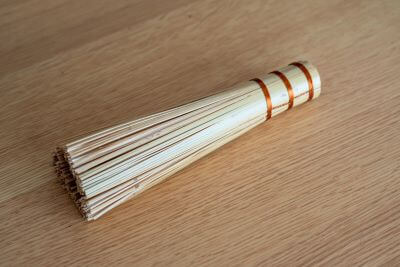
This is a bunch of bamboo skewers held together with a rubber band or something similar. This is mainly used for scraping off the meat stained with blood in the abdominal area of large fish after the innards have been removed.
Shellfish opener (Mukibo)
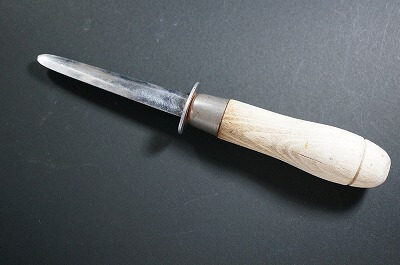
This is a spatula-shaped utensil for which the metal part is used to insert in shellfish to open them, remove the adductor, and take out the meat. It is also known as “Kaiwari”.
Fish scale remover (Urokotori)
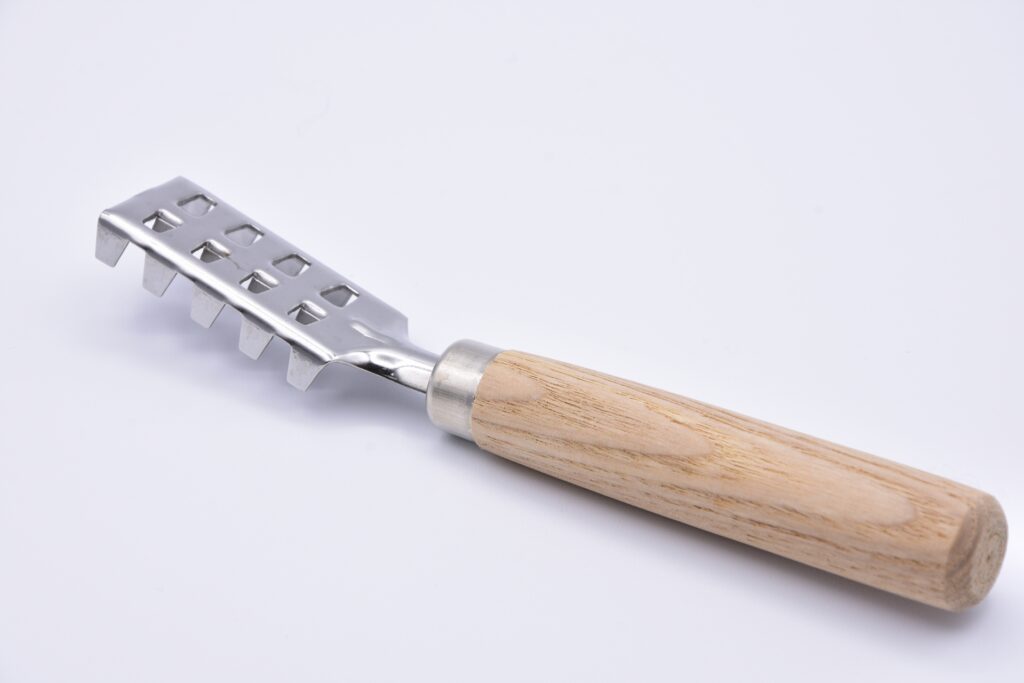
Fish scale remover is made to easily remove the scales attached to the skin of a fish that will be prepared and cooked whole.
Although scales can be removed with a kitchen knife (Hocho), it is more efficient and less likely to damage the fish if the scales are first removed to some extent with a fish scale remover. When choosing a fish scale remover, select its size according to the size of the fish. The basic usage of the fish scale remover is to move it from the tail to the head of the fish.
Bone remover (Kotsuatari)
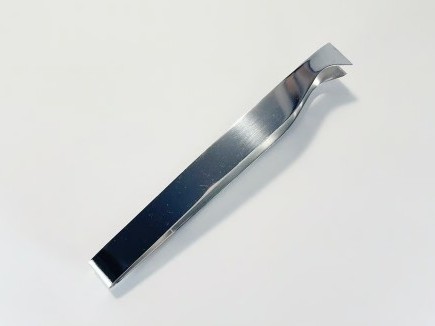
The appearance of Bone remover (Kotsuatari)
It is a tool for removing small fish bones. There are different types depending on the size and shape of the tip, and you should use one that suits the thickness and angle of the fish bones.
The one in the image can remove several bones at once for fish of the size of mackerel or horse mackerel.
Gimlet-shaped tool (Meuchi)
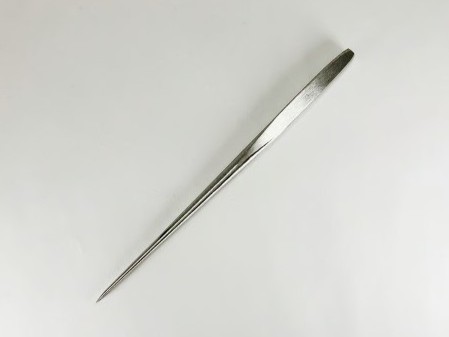
The appearance of Meuchi
Meuchi is a gimlet-shaped tool used to cut eels and other slimy, long-bodied fish. It is inserted under the eyes and driven into the cutting board to secure the fish in place. The tail is held down with one hand while the fish is cut with a knife.
Share this article